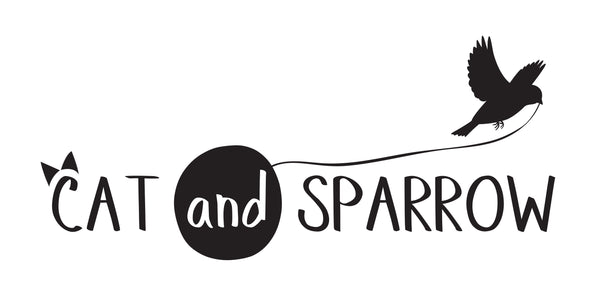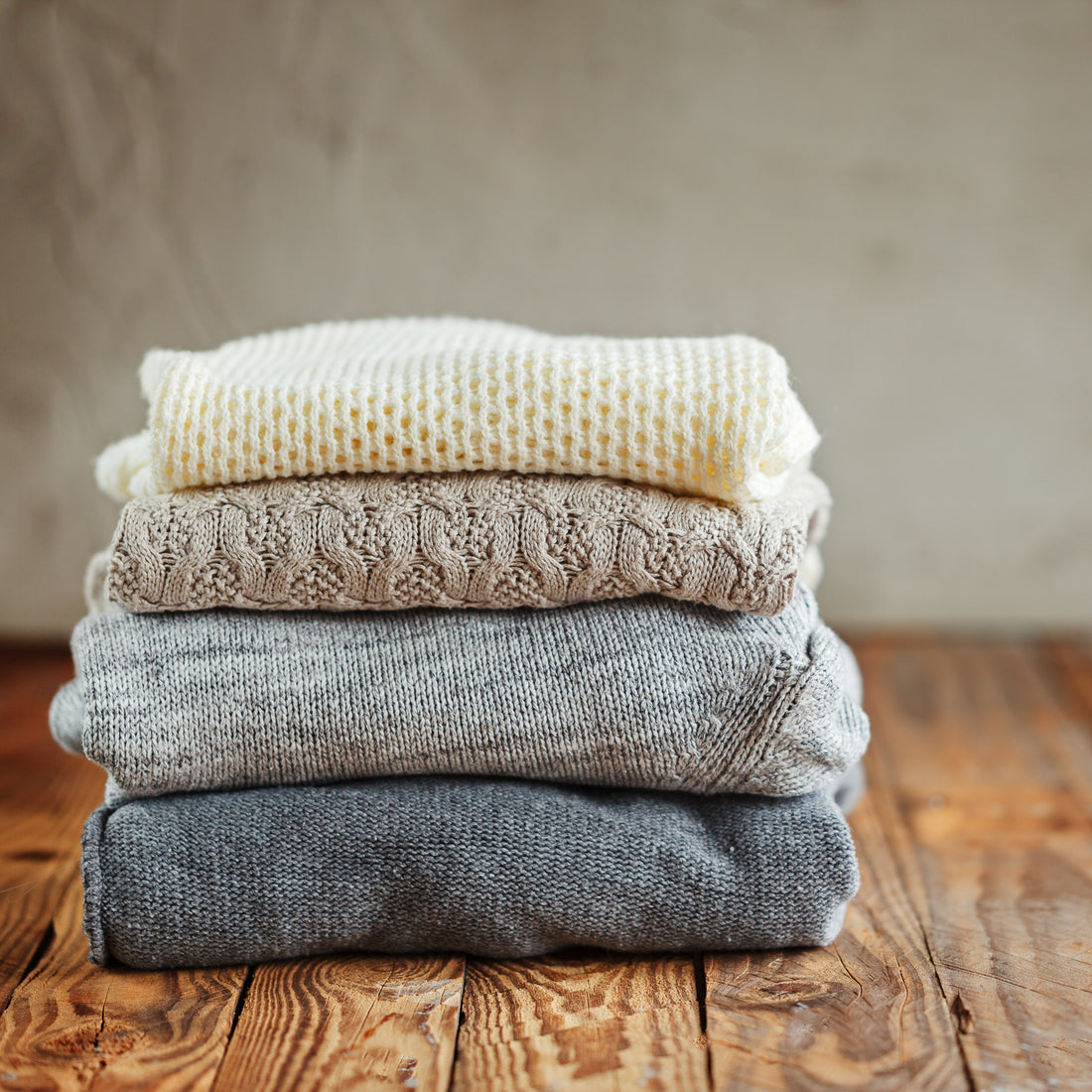There are so many types of yarn, varying in thickness, fibre content, structure and style, and each one behaves differently. So how can you make sure you're selecting a suitable yarn for your project?
As a beginner knitter I made a few things with yarns not ideally suited to the garment in question: the sweater that I made with a rather too heavy merino/suri alpaca worsted-weight yarn that pills every time I breathe in and now reaches down to my knees. It would be perfect for shawls or scarves - not so much for anything that has armpits.
Then I crocheted a cardigan with some tightly spun wool so stiff it was like wearing cardboard armour. You live and learn.
So, what are some useful things to know when choosing your yarn, or finding the perfect project for the perfect skein?
Today I'll focus on fibre content, as it's a great place to start. Different fibres behave differently, and it can be really helpful to know what to look for.
Wool
Wool has several defining characteristics:
- It's durable - wool can withstand a lot of wear before breaking
- It's elastic - wool's natural crimp means it retains shape memory, so your garments will spring back into shape easily after wearing or washing
- It has anti-bacterial and anti-microbial properties - it's naturally resist to mould and mildew
- It keeps you warm in winter and cool in summer - its structure enables it to insulate and to draw heat and moisture away from the body.
Various wools have other qualities, of course. Wensleydale, for example, has a very long staple (fibre) length, so it provides excellent drape. Shetland has natural water-repelling properties that make it perfect for outer-wear. Merino is notorious for pilling, but is without a doubt one of the softest, finest wools.
Wool is brilliant for garments that require structure and elasticity, such as socks and sweaters.
Camelids
Camelids include camel, alpaca, llama and vicuna.
Their fibre has a hollow structure, making resulting yarns very light and warm. It's good for winter socks and gloves, particularly if it's blended with wool for a bit of extra elasticity, although the structure of knitting can provide this in a pinch (lacy structures tend to be more elastic than plain or cables).
The two different types of alpaca - Huacaya and Suri - have very different characteristics. Suri is very long, shiny and has no elasticity, so it doesn't retain its shape in garments. Huacaya is fluffier, and slightly more springy, as it has more natural crimp than Suri. Both work really well blended with other fibres, especially garments. The heavier the garment, the more elasticity you will need to prevent its weight stretching the stitches.
Where alpaca shines, in my opinion, is in things that require drape. I've got several summery tees knitted in my Cocoon 4ply, a blend of alpaca, linen and silk. Alpaca is also magnificent in shawls. It's very warm and soft, and slightly fuzzy, making it supremely snuggly. Its long fibre length and smooth surface makes it quite resistant to pilling - also a bonus.
Silk
Where to start with silk? It's magical. Whole books have been written on its history and properties, and on the struggle to make something similar for less time, effort and money.
Most silk in the textile industry is mulberry silk, which is the product of cultivated Bombyx moths. It has a prism-like structure which refracts light in different directions, giving it its characteristic sheen. It's very strong, durable and light, keeps you warm in winter and cool in summer.
Wild silks like Tussah, Eri and Muga silk are not so uniform in texture as mulberry silk, making them feel slightly rougher to the touch, and lending themselves to a slubbier, less shiny fabric.
Silk is another fibre with little to no elasticity but loads and loads of drape. Its strength makes it a brilliant alternative to nylon or polyester for adding durability to socks, and its insulating qualities won't hurt your feet either.
Silk won't pill or felt (although it can shrink when washed in hot water), it's breathable, resistant to fungus and rot, and is naturally hypoallergenic.
I honestly don't think you can go wrong with silk. I can't think of a single thing I wouldn't use it in, although the higher the silk content, the more drape and less elasticity you'll get from the yarn.
Mohair
Mohair is produced by the angora goat. It's very strong, very fluffy, very warm, and has tons of elasticity - more than most wools. Mohair resists sagging and stretching, so it's brilliant for garments, and for mixing with fibres that don't stretch as much. Just don't use it in anything that you think you'll need to unpick. Take it from one who knows.
Plant fibres, e.g. cotton and linen
I'm lumping these together, but really each plant fibre is very different. Linen, produced from flax, has very long bast fibres (the woody innards of the plant that are used to make yarn), which give it lots of strength and superior drape. It's resistant to abrasion, and it gets softer the more it's handled.
I love working with linen - both spinning it and knitting it. Like silk, though, it doesn't have any elasticity, and won't spring back into shape easily. It's highly absorbent, and unlike wool or silk won't insulate you when it's wet. I think it's perfect for summer garments, and for things like light shawls.
Cotton, on the other hand, has an extremely short fibre length, so requires a lot of twist to hold the fibres together. The tighter the twist, the stronger the yarn, but the less airy and light it is.
Cotton is very soft and easy to wear, but its complete lack of elasticity means that pure cotton is likely to stretch. It can also be quite tough to keep an even tension with cotton as a result. Knitting a swatch is always a good idea with any fibre but with cotton I think it's essential.
Okay, I'll stop now.
Halfway through writing this post I realised just how many things there are to consider in yarn selection. I've barely scratched the surface. In coming posts I'll talk about structure and weight. Structure in particular can tell you a lot about how a yarn will behave - whether it's suited more to cables or lace, socks or hats.
Of course, there are no rules at all. You can knit whatever you want with whatever you want. That's the joy of it all. Being armed with knowledge, however, can help you make decisions that will make your projects really sing, whatever you're using.


1 comment
I found you today. I loved this article in particular; I’ve also read some great blogs with more information. You are going on my desktop as I knew there was a lot about knitting I didn’t know, but I didn’t realise just how much. Thank you so much.